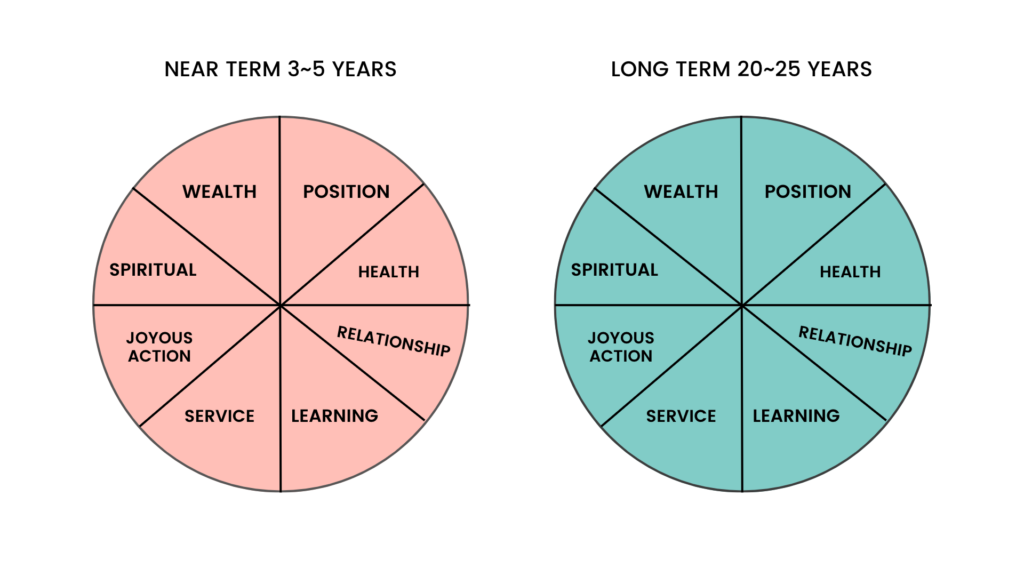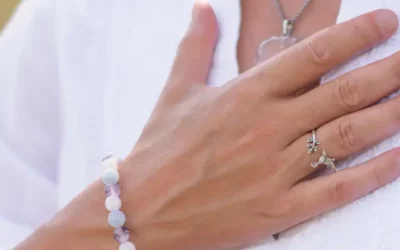There are as many variations of Wheel of Life coaching configurations. This approach creates awareness of where one is in multiple aspects of one’s life goals, at a point in time in life. Since these factors are based on our values, we need to customize.
The concept of the Wheel of life has been around for long. Though commonly attributed to Paul J Meyer, documented evidence exists from Buddha’s teachings on this, and even before, with the Upanishad, in terms of measuring oneself through multiple lenses.
Let me take you through the version I use. I started using it much before I started coaching, for my own development. Now I use it extensively in coaching. In my experience, the present moment Wheel of Meyer has limited value. No one looks at the present situation without an element of what they need in the future. Unless one creates two Wheels of Life, one for the present, and another for the desired future, there is no growth potential from the Wheel of Life.
I extended this a bit more. The present moment itself is only a starting point. Most people I talked to in my leadership journey, later in my spiritual journey, and more recently my coaching journey, said they cannot see clearly beyond 3~5 years while setting goals. The farther the fuzzier. I accepted this, and requested a Wheel of life at end of 3 years, based on where they are now, and how they can grow with whatever experience and expertise they have. This was not difficult for most.
Then I challenged them. Can you please visualize, I asked, at least 25 ~30 years ahead (or more if you are younger), when you are at about age 65? Can you visualize the legacy you would like to leave behind when you are no longer engaged in a soul-sapping work routine? When they asked ‘what control do I have so far ahead’, my answer was direct. ‘What control do you have now, except thinking that you have? Can you guarantee you would be alive in a few months, or even tomorrow?’ ‘Don’t worry’, I said, “Stop controlling. What’s important is the quality of the vision. Who would you like to be?’
Over time, this question has morphed into ‘What would the Universe wish you to be?’ Reflect on the significance of this question. Why are you here? Who are you? What do you need to be? What have you been created for? What legacy would you like to be remembered for?
It’s not that I use a revolutionary and different segmental model from others. It’s just that, in my experience, many of us are focused on wealth and power creation in our work and life. We use these as our measures of success. This is dangerous. For one thing, the need for wealth and power is driven by greed, and can never cease; the more you have the more you want. For another, neither will give you happiness. There are many studies that prove this lack of correlation between wealth and power with satisfaction and happiness.
By the time we realize that there are additional factors such as health, relationship, service, etc. that add more to overall happiness and satisfaction than wealth and power, we are far too late to course correct. My focus is on 30-something-old people who have tasted success in wealth and power, and are dissatisfied, but not knowing what would satisfy them. The Wheel of Life coaching method I use has 8 segments inquiring into goals for:
- Wealth creation focusing on future passive revenue
- Power and Position focused on influence and inspiration instead of control
- Health
- Relationships, starting with spouse and children as core, then expanding
- Service without expectation
- Learning continuously
- Activities just for the joy of it
- Meta factors of community, globe, environment, etc.
Each of these segments has 3~5 measurable SMART bulleted goals. These for the 3 years can be year-wise, and broken down quarterly and monthly for the current year for tracking action and outcome. The Wheel of Life should create awareness of what’s lacking in our current state, why and where we should move to, and what challenges we may face, and then act on the goals till we are successful, anchor them, and then progress with new goals.
For the long-term vision, goals are one time using the same template. The client walks back from the age of vision to the same timeline as the 3-year endpoint. Placing these two wheels side by side one can see the gaps between the goals, one moving forward from the present to a point 3 years ahead, another moving back from a 25-year later vision to the same time point.
This comparison tells a lot about our short terms goals, still governed more by the first 2 factors, and the long-term vision, which for many would have moved to the other 6, at least to health and relationships.
This approach of creating Wheels of Life can be very useful in coaching clients to create their future. It is an extremely powerful creative visualization tool. What’s important is to view this as a journey rather than a destination. As we journey, many things, including our goals change. We should reflect and have the wisdom to course correct focusing on the joy of the journey.





